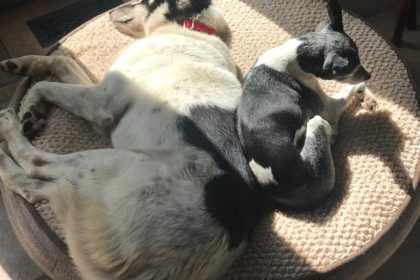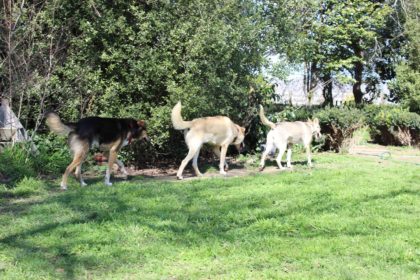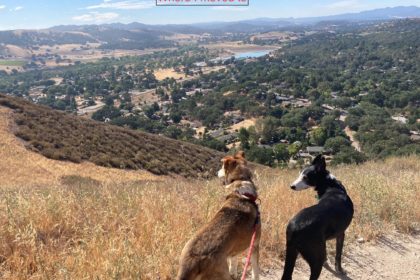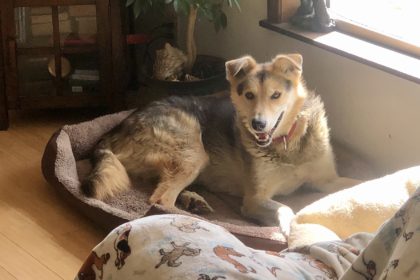SP Kennel is located in the heart of this great state – right in the center! We are 350 miles from an ocean to the south, 450 miles from an ocean to the north and nestled between two mountain ranges. On a clear day, we can see the huge mountain peaks to the south: Denali is the centerpiece. The “Interior” of Alaska is made up of endless rolling hills, wild valleys with little civilization and small pockets of humanity. So, why are so few people in this vast and limitless country?
It is the winter weather that keeps the human population to a minimum. The hearty souls who choose to reside in this winter wonderland make their homes here despite some chilly obstacles. It is the very existence of these cold weather complications that define our winter lifestyle and create our daily winter routines.
The COLD
Aliy bundles up for December chores.
We do not train the dogs in the extreme cold. Our temperature cut off varies depending on wind, precipitation and other factors, but it is usually about 30°F below zero. We feed the dogs twice the regular amount during a cold snap. The typical Alaskan husky burns those extra calories to stay warm. We also have kennels in the basement for some of the shorter coated dogs or dogs with a high metabolism. We have had over 20 dogs in our 500 ft² basement.
As the month continues, we all (humans and dogs) get acclimated to the cold. The funny thing is, when a Chinook storm brings in warm breezes from the South, it seems like t-shirt weather at 10°F above. But, when this happens, you smile because you are confident that you are now weathered and really ready for winter.
The DARKNESSHow dark does it get in December? During daylight hours, the sun is never far above the horizon. It seems to hover just above the mountains to our south. The views are spectacular for any avid “sunrise” or “sunset” photographer and gorgeous snapshots are commonplace. But, the delineation between sunrise and sunset is a bit blurred at times.
 Interior Alaska – Sunrise or Sunset in December
Interior Alaska – Sunrise or Sunset in December
Today, December 6, 2007, the sunrise was at 10:31 AM and the sunset was at 2:48 PM – 4 hours and 17 minutes of daytime. We have 15 days until December 22, the Winter Solstice and the shortest day of the year. On December 23, the length of daylight hours begins to increase.
The lack of sun does not always mean total darkness! For a couple hours before sunrise and after sunset, the sky is often a silver glow, since the sun is not very far below the horizon. But regardless of the light, most December days are spent outside. Photos typically show dog mushers walking around with a headlight affixed to their brows. Many people do use headlights while mushing or doing chores around the kennel. But, we try to avoid dependence on them. A headlight creates “tunnel” vision and limits the focus of our attention to the small, lighted area. Although this apparatus is a constant companion in the winter, it is not the only solution. Our eyes and brains get accustomed to seeing in dim light and exceptional “night” vision develops. This is similar to the temperature acclimation: our eyes and brains just adapt to the darkness.
 Allen models his headlight, a critical winter tool.
Allen models his headlight, a critical winter tool.
Training runs in darkness are the norm. When the winter sky is clear and the stars are bright there is enough light to drive a dog team down a wintry trail and still be able to recognize all of the team members. Trails, through the rolling hills and wild valleys and past the occasional lighted cabin, provide an serene experience. Neither darkness nor cold diminishes that feeling.
Sometimes our trail is lighted by the Northern Lights, pulsing overhead in shades of green, red and purple, creating a spectacular vision characteristic of Interior Alaska. These are the times we realize how fortunate we are. We may be bundled against the 20°F below temperatures, but we are surely living in God’s Country.








